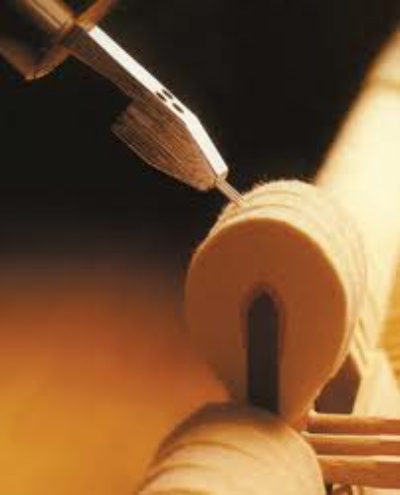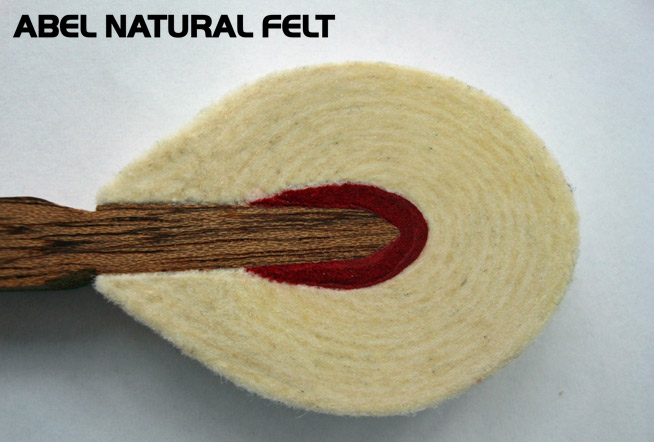Piano Voicing
Voicing of a piano:
This is the manipulation of the hammers to make the piano sound the way you like it. What kind of tone do you wish to have coming from your piano? Beauty, after all, is in the eye of the beholder. Some wish for a power piano – strong and bright. Others want soft and felty. Personally, I look for versatility in a piano. I prefer pianos to be intimate and warm at softer dynamic levels and have a crossover where they can shift into more strident sounds when playing with force. Pianos that are icy cold or b rittle at softer volumes I find somehow less satisfying and difficult to express emotionally. Conversely, playing powerful music with a dull thud also feels like it is somehow lacking.?
rittle at softer volumes I find somehow less satisfying and difficult to express emotionally. Conversely, playing powerful music with a dull thud also feels like it is somehow lacking.?
Let’s be clear, however that piano voicing has limitations. I’ve often said that 50% of the tone of a piano is inherent to the instrument. It’s the wood, the soundboard, the bridges, it’s the design, the scale, the placement and thickness of the soundboard, the amount of ribs, back posts, rim construction etc. But it’s the action how it translates our musical intention into sound – all of these elements make up the piano. These I would mainly consider non-negotiable. Yes you can start down the path of reconstructing parts but this is more major surgery. The other 50% can be altered somewhat depending on the quality of the piano and the results vary drastically. Piano hammers also have a shelf life as well. Really old and “dead” sounding hammers fibers, ones that are really grooved, hardened or lifeless sounding need replacement.
Needling of the hammers:
Most pianos with time and playing become more brittle and harsh. The majority of the requests for voicing involve making pianos softer with fuller body. When I was young, I sought the brassy power piano. As I age, I look for tonal color more akin to “autumn leaves” colorful, warm and beautiful. We get used to the piano we play and don’t consider that alterations could make the experience more enjoyable. With harsher tones, piano hammers can be “needled” in various locations to achieve those results. A needling tool simply has needles that get inserted into the piano hammer. Since piano hammers consist of felt stretched and glued around a wooden hammer molding, the insertion of the needle “fluffs” hammer felt, making it not so compacted. In other areas of the hammer head, the needle acts to give greater body or sustain. Most piano technicians know how to needle to create the desired effect.
Chemical Solutions:
Solutions for both hardening and softening also exist. A hardener coats the hammer and creates more brilliance in tone. Softeners penetrate and relax fibers and create softer sounds. While there are those who disagree with putting anything on the hammers, I believe that there is a place for more drastic alterations of hammers that have desirable end results. The danger is that solutions can be added to a hammer but cannot be extracted. I’ve actually played pianos rendered unplayable due to excessive chemical applications. The recourse really is only to change the hammers. But I’ve also played many pianos that have been strategically voiced with solutions for incredible results. The word here is caution and work with a piano technician you trust. Ideally, I like the felt of the hammer to speak. If you’re looking for a certain sound, sometimes changing the hammer is a better way than to try and artificially transform a piano into something it wasn’t intended to be.
Pianos are dynamic in nature. They are constantly changing. Voicing is not a do-once application but rather a process with time and maintenance. It involves keeping the piano at its best throughout its life-span. Have you lost the love of your piano? Sometimes pianos simply need to be voiced to bring it back to more of the sound when you first acquired it. You’ll be amazed at the results. Piano maintenance is so much more than tuning. Once you realize the possibilities, you’ll be amazed at how musical and beautiful your piano can be. Back to front page.
Note; There are many different qualities and prices of hammers. Abel and Renner are the best but also most expensive. Prices vary from $ 10 to $ 800 for a set, but the difference in sound is also huge, as you can imagine.